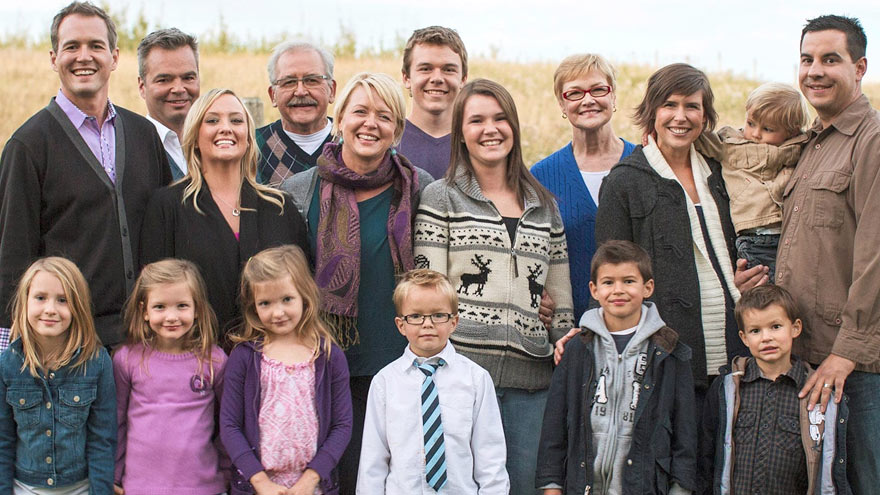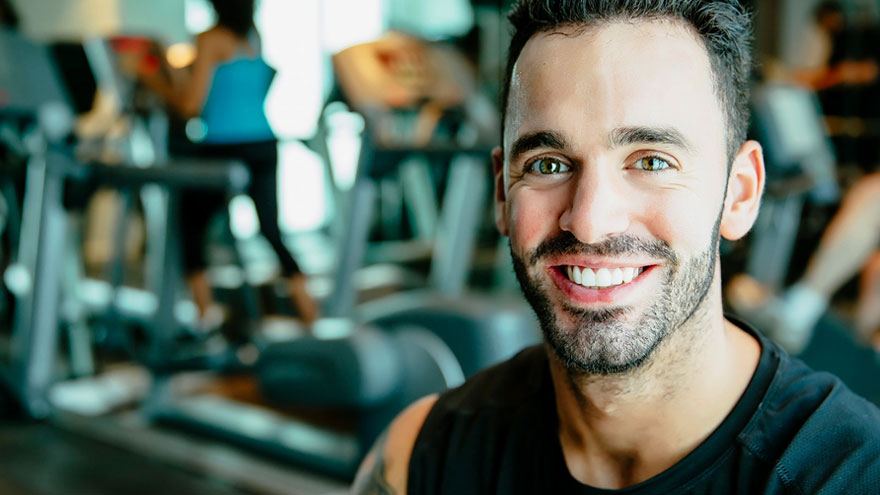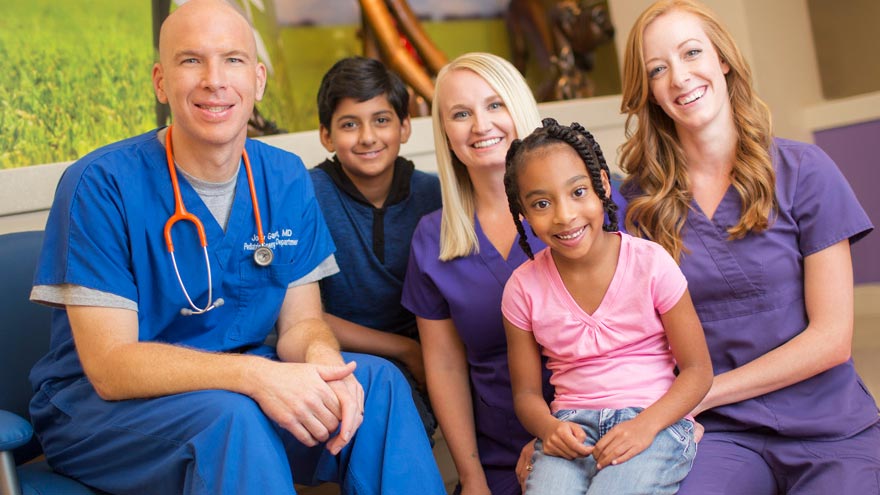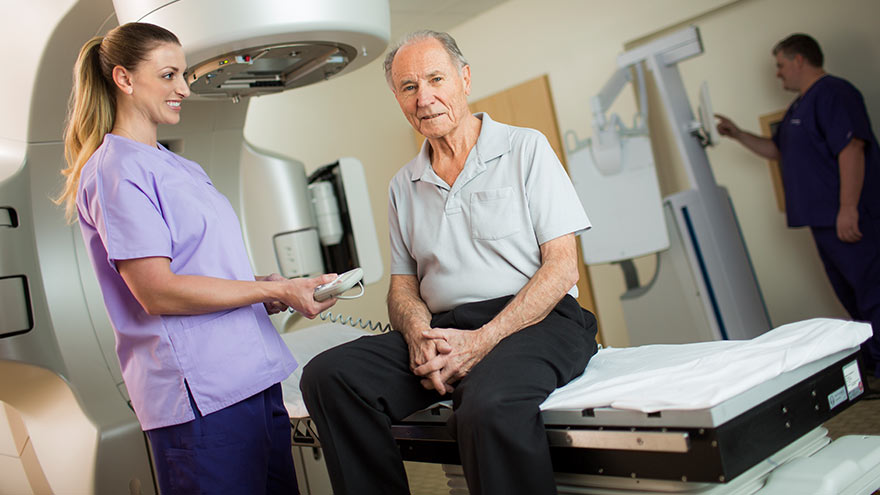Search
-
Get Moving: How to Exercise with Arthritis
An arthritis diagnosis doesn’t mean your exercise routine has to end. In fact, a consistent routine can actually improve mobility. Although stiff and painful joints can make it difficult to keep moving, staying active is essential for easing pain. October 11 is World Arthritis Day, so we asked Michelle Higgins, MPT at Renown Physical Therapy & Rehab some advice about exercising with arthritis. According to the Arthritis Foundation, arthritis affects one in five adults and 300,000 children. As a matter of fact arthritis is the nation’s leading cause of disability. Your joints certainly don’t need to suffer when you exercise. In general exercise is actually necessary for those with arthritis. Not only does it reduce joint pain, but it also increases strength and flexibility. Furthermore those adopting a regular exercise routine also have more energy, deeper sleep and find it easier to maintain a healthy weight. “Exercise is a necessary component to managing your arthritis,” says Higgins. “Consistent participation in an exercise program has been shown to promote long-term pain relief, increased body function and an improved quality of life. Alternatively, a lack of exercise can actually increase joint pain or stiffness and eventually lead to long term disability and suffering.” Exercising With Arthritis Exercise truly is the most effective non-drug arthritis treatment available for reducing pain and improving movement. And it can even include daily activities like gardening, dancing or walking your dog. Of course talk to your doctor or physical therapist about what exercises fit into your specific treatment plan. With this is mind, the four specific components below are important to an effective arthritis exercise program: Range of motion Moving joints through their full available range of movement is important. This frequently increases function and decreases joint stiffness and pain. For this reason, aim to complete these exercises daily. Examples include bending, straightening, and rotating specific joints, or static and dynamic stretching. Strengthening These exercises target muscles supporting and protecting our joints and bones. Strengthening is also necessary for weight control, so two-to-three sessions per week are recommended. In order to allow your body to adapt, begin with light resistance and start slow. Strength exercises include weightlifting and using resistance bands. Low-impact aerobic exercise Aerobic exercise is certainly necessary for overall well-being, weight management and heart health. Aim for two-to-three sessions a week. Low-impact exercises include walking, swimming, cycling, elliptical machine exercises and water aerobics. Balance Good balance is also vital for an effective arthritis program. On the positive side, solid balance prevents falls by increasing your ability to stay upright whether you are moving or sitting still. Likewise, it improves your confidence with walking and daily activities. In order to keep excellent balance, incorporate daily balance exercises. Examples of balance exercises include the use of an exercise ball, Tai Chi and exercises such as standing on one foot. Start Slow, Finish Strong As you begin your exercise program, remember to listen to your body. Start slowly – it can take several weeks for your body to adjust to exercise. Consult your doctor, or physical therapist, if you experience increasing pain or swelling which doesn’t go away with rest. Above all, incorporate fun and motivating activities so you’ll stick to them long term and improve your results. Renown Physical Therapy & Rehab 775-982-5001 Through outpatient physical, occupational and speech therapy, Renown Physical Therapy & Rehab gives you hands-on, individualized treatment in convenient Reno/Sparks locations. We have the latest, most advanced physical therapy and rehab equipment, specialty services and treatments. Renown Physical Therapy & Rehab is now open on Robb Drive in addition to three additional locations in Reno and Sparks. Call 775-982-5001 or visit us online.
-
How to Fight Cancer that Runs in the Family
Your mother had breast cancer. Your uncle had colon cancer. A cousin has stomach cancer. Could yours be the next name to make the family cancer list? “Possibly,” says Dr. Robert Nathan Slotnick, MD, PhD, Medical Geneticist at Renown Medical Group. In this article, the doctor discusses the genetics behind Lynch syndrome — and how you and your family can fight it. What is Lynch Syndrome? Lynch syndrome, also known as hereditary non-polyposis colorectal cancer (HNPCC), is one of the most common genetic conditions known to increase cancer risk in individuals and families. It enables colon and other cancers to develop by causing mutations in mismatch repair (MMR) genes. “The genes MLH1, MSH2, MSH6, PMS2 and EPCAM normally help to repair damaged DNA,” explains Dr. Slotnick. “But when they don’t work properly, naturally occurring DNA replication errors are not repaired efficiently. These errors accumulate and cancer can be the result.” Colon cancer is just one of many possibilities. People with Lynch syndrome also have a higher risk of developing endometrial cancer (cancer of the inside lining of the uterus) as well as cancer of the ovaries, stomach, pancreas, kidney, brain, and bile duct, among others. These syndrome-enabled cancers often appear in patients before the age of 50. Family Cancer Clues The family connection to cancer is a strong one notes the doctor. “Cancer is best considered a genetic disease because it is always tied to changes (or mutations) in our inherited material: our DNA,” says Dr. Slotnick. “These DNA changes cause cells to lose control of their normal constraints on growth and metabolism and can allow abnormalities to develop.” “Although all cancers are genetic,” he adds, “not all cancers are hereditary or passed down through generations.” But because Lynch syndrome IS a hereditary condition, personal and family cancer histories provide invaluable information toward diagnostic confirmation and to a path of surveillance, prevention and treatment. Once a strong family history of cancer is confirmed, doctors and geneticists can move forward with targeted genetic testing to identify specific gene mutations. If Lynch syndrome is diagnosed, testing can also reveal your risk for associated cancers. And your results could be a wake-up call to family members. According to the Centers for Disease Control and Prevention (CDC), close relatives of people with Lynch syndrome have a 50% chance of having similar gene mutations and a higher risk of cancer. The good news is detection and prevention progress is being made. “Lynch is just one of many cancer syndromes where risk is tied to heredity,” explains Dr. Slotnick. “In the last few years, our ability to identify those at risk for this type of cancer predisposition has improved markedly, both in diagnostic accuracy and cost. This allows us to provide aggressive surveillance and prevention choices to individuals and families at risk. Healthier families and lower cost: it’s a win-win.”
-
Get to Know the Types of Car Seats
Parents often struggle with installing and choosing car seats for their children. Picking out a car seat for your child is a never-ending battle. Safe Kids Washoe County has made it simple for you to understand the types of car seats that will work for your child. Types of Car Seats Rear-Facing Only Seat. Your baby's first car seat is often used from 5 to 40 pounds. People usually buy this type of seat because it is portable. Convertible Car Seat. This seat is larger and stays in the car; it may be rear-facing until your child is two years or more. After that, it can change to a forward-facing seat. Forward-facing-only car seat. This type of seat is used in one direction and has a 5-point harness and top tether. Combination seat. This is a forward-facing seat with a 5-point harness and top tether and can change into a booster seat when you remove the harness. 3-in-1 car seat. This seat also stays in the car. You can use it rear-facing, forward-facing, and then later, as a booster seat. Booster seat. It boosts the child for a safer and more comfortable fit of the adult seat belt. Make sure your child has outgrown the weight or height limits allowed in the forward-facing car seat. The seat belt must lie flat across your child's chest, on the bony part of the shoulder, and low on the hips or upper thighs. Most children will be between the ages of 8 to 12 years old before they are ready for the seat belt alone. Have a trained car seat technician check your installation Why: 3 out of 4 car seats are installed improperly, with some studies show that the misuse rate is 90%, with the average car seat having three mistakes. Solution: Ensuring that your child's car seat is installed correctly by a certified car seat technician will ensure your child's safety.
-
How to Safely Store Breast Milk
Breast milk. It's often referred to as liquid gold. And fortunately, it can be safely refrigerated or frozen for later use, which can allow you to be a bit more flexible in your new routine with baby. Whether you're getting ready to return to work, planning for the chance date night out or just exclusively pumping, it's crucial to understand the guidelines for proper breast milk storage. Storing Breast Milk Use clean bottles with screw caps, hard plastic cups that have tight caps or nursing bags (pre-sterilized bags meant for breast milk). Be sure to label each container with the date the milk was pumped and your baby's name if the milk is going to childcare providers. You can add fresh, cooled milk to milk that is already frozen, but add no more than is already in the container. For example, if you have two ounces of frozen milk, then you can add up to two more ounces of cooled milk. For healthy full-term infants, milk can be stored as follows: Room temperature - six to eight hours (no warmer than 77°F, or 25°C). Refrigerator - up to five days at 32°-39°F (0°-3.9°C). Freezer– Varies depending on freezer type. Up to two weeks in a freezer compartment located within the refrigerator. Three to six months in a freezer that is self-contained (standard kitchen fridge/freezer combination) and kept at 0°F (-18°C). Breast milk should be stored in the back of the freezer and not in the door. Six to 12 months in a deep freezer that is kept at -4°F (-20°C). Be sure to leave about an inch of space at the top of the container or bottle to allow for expansion of the milk when it freezes. Thawing Breast Milk Place frozen breast milk in the refrigerator to thaw (about 24 hours) then warm by running warm water over the bag or bottle of milk and use it within the next 24 hours. If you need it immediately, remove it from the freezer and run warm water over it until it's at room temperature. Never microwave breast milk and do not refreeze it. Once your baby has started to drink from the bottle, you should use it within one hour. You may find that different resources provide different recommendations about the amount of time you can store breast milk at room temperature, in the refrigerator and in the freezer. Talk to your doctor or lactation consultant if you have any concerns or questions.
-
Not a Fall Sports Fan? Ways to Keep Kids Active
The mornings are crisp and it’s about time to pull out those scarves and boots, so what does that mean? Football, baby! But not all kids are fans of fall sports. Elaina Lantrip, an advanced practitioner with Renown Pediatrics talks about how to keep kids active if they’re not in love with fall sports. Fall in northern Nevada means tailgates, Saturdays at the field, football fun and prep time for basketball season. But oddly enough, we parents aren’t in control of our kids’ likes and dislikes — shocking, we know. This means sometimes kids don’t like the fall sports we enjoy. So how do we keep them active even if they’re not a fan of football, basketball or any sport ending in “-ball”? We asked Elaina Lantrip, APRN for Renown Pediatrics, for some tips. Activities for Kids Who Don’t Like Fall Sports What are some reasons kids may not be interested in sports? Team sports are often the go-to option to get your children more active. But there can be a number of reasons your child may not be interested. First, many fall sports are open to preschoolers, but it’s not until age six or seven that most kids have the attention span, physical skills and can fully grasp the rules. If your child is nervous about their abilities, try practicing at home before quitting the sport. You may find your child becomes more interested as they become more confident in their skills. Other kids may find team sports too competitive and feel too much pressure to play perfectly for their coach and teammates. If possible, evaluate the coach and league before signing up to find out how competitive they are. Doing so ahead of time may help you find the right fit for your little one. What do you suggest to keep kids moving when they don’t like fall sports? Some kids just don’t enjoy sports or would prefer to do something on their own, and that’s fine too. Kids can still get the 60 minutes of exercise they need each day in other ways. Free play such as shooting baskets, riding bikes, playing tag or jumping rope can be good options or they may be interested in individual sports such as swimming, horseback riding, dance lessons, roller skating or skateboarding, hiking, golf, tennis, gymnastics, martial arts, yoga, running or cheerleading. All of these are good options because they keep your child active and moving, but may fit better with what they’re interested in and truly enjoy. How can you work with your child to find which activity is best for them? Finding the right fit can be a challenge. It’s important to be patient as it may take several tries at different sports or activities to find the right activity. Start by explaining to your child they need to take part in some activity. Work with your partner to create a list of options you both agree on and see what interests your child. Once your child makes their pick, make them stick with it through one season or a full set of lessons to ensure they get a complete idea of what’s involved. One game or one lesson isn’t enough to decide it is or isn’t for them. What are some easy ways to be active indoors? Even though staying indoors can be a bit of a bummer, there are plenty of options to help your kids and yourself stay active while enjoying some quality time together. You can plan a scavenger hunt, build a fort, set up hopscotch in the hallway, throw a dance party and make everyone freeze each time the music stops, create an indoor obstacle course, hula hoop or play tag in the living room. As your kids get older, playing video games that require movement and mimic sports or physical competitions are good options. Your kids may even join in on a workout DVD or you can have a friendly contest to see who can do the most pushups and sit ups in one minute. BestMEDICINE Kids Subscribe to BestMEDICINE Kids and receive a monthly email featuring educational and inspirational stories dedicated to kids health and wellness from pregnancy through childhood. Join Today!
Read More About Not a Fall Sports Fan? Ways to Keep Kids Active
-
SOGI – The Most Important Terms to Know
SOGI stands for sexual orientation and gender identity. Being a SOGI-inclusive medical facility means regardless of our differences, we treat others with dignity and respect. Sean Savoy, Renown Health Manager of Spiritual Care, explains SOGI terms and their importance in a healthcare setting below. SOGI History Although the UN passed a historic resolution on SOGI in 2016, it is still a relatively new term for some. Above all, an inclusive environment where every patient feels safe and valued, improves the quality of care in our community. In reality, defining gender and sexuality can be confusing. However, the terms we use to define gender and sexuality are an important influence on how we relate to each other. Generally, "sex" refers to the biological differences between males and females. Still the term “sex” doesn’t fully capture the complex biological, anatomical and chromosomal variations that can occur. Accordingly, having only two (binary) options – biological male or biological female – might not describe what’s going on inside a person’s body. In essence, assigned sex (also called "biological sex) is given at birth based on medical factors. These include your hormones, chromosomes and genitals. Most people are assigned male or female, and this is what’s put on their birth certificate. When someone’s sexual and reproductive anatomy isn’t clearly female or male, that person may be described as “intersex.” However, a person’s biological or assigned sex may be different from a person’s actual or perceived gender identity or expression. The word “gender,” therefore, is more difficult to define. It could refer to the gender or sex role society determines is acceptable, desirable or appropriate based on a person’s perceived sex. Likewise, it could refer to an individual’s own gender identity or preferred gender expression. What is Gender Identity? To summarize, gender identity is one's innermost concept of self as male, female, a blend of both or neither. To clarify - how individuals perceive themselves and what they call themselves. Of course sometimes a person's genetically assigned sex does not line up with their gender identity. These individuals might refer to themselves as transgender, non-binary, or gender-nonconforming, for example. Another key point is the process of gender transition. This specifically refers to more closely aligning your internal knowledge of gender with your outward appearance. According to the American Psychiatric Association's Diagnostic and Statistical Manual of Mental Disorders (DSM), the term – which replaces Gender Identity Disorder – "is intended to better capture the experiences of affected children, adolescents, and adults." What is Sexual Orientation? Sexual orientation is an internal or enduring emotional, romantic or sexual attraction to other people. For example, you could be heterosexual (straight), gay, lesbian, bisexual or even pansexual. SOGI Terms to Know Below are some common SOGI terms according to the National LGBT Health Education Center and the Human Rights Campaign. The following list is not meant to represent every term (or definition) used by the LGBTQ+ community. LGBTQ+ Stands for lesbian, gay, bisexual, transgender and queer (or questioning). The plus encompasses other identities that fall under the queer umbrella with one common theme: they are not strictly straight or cisgender. Queer An umbrella term used by some to describe people who think of their sexual orientation or gender identity as outside of societal norms. Some people view the term “queer” as more fluid and inclusive than traditional SOGI identities. Due to its history as a derogatory term, the term is not always embraced or used by all members of the LGBTQ+ community. Sexual Orientation Terms Asexual (adj.) – Describes a person who experiences little or no sexual attraction to others. Asexuality is not the same as celibacy. Bisexual (adj.) – A sexual orientation that describes a person who is emotionally and sexually attracted to people of their own gender and people of other genders. Gay (adj.) – A sexual orientation that describes a person who is emotionally and sexually attracted to people of their own gender. It can be used regardless of gender identity, but is more commonly used to describe men attracted to other men. Heterosexual or Straight (adj.) – A sexual orientation that describes a person whose sexual or emotional attractions and behaviors focus exclusively or mainly on members of the opposite sex or gender identity. Lesbian (adj., noun) – A sexual orientation that describes a woman who is emotionally and sexually attracted to other women. Pansexual or Omnisexual (adj.) – A sexual orientation that describes a person who is sexually and emotionally attracted to people of any sex or gender identity. Pansexual people may refer to themselves as gender-blind, asserting that gender and sex are insignificant or irrelevant in determining whether they will be sexually attracted to others. Gender Identity Terms Bigender or Binary (adj.) – Describes a person whose gender identity is a combination of two genders. Cisgender (adj.) – A person whose gender identity aligns with the assigned sex at birth or biological sex. Gender non-conforming (adj.) – Describes a gender expression that differs from a given society’s norms for males and females. Gender transition (noun) - The process by which some people strive to more closely align their internal knowledge of gender with its outward appearance. Some people socially transition, whereby they might begin dressing, using names and pronouns and/or be socially recognized as another gender. Others undergo physical transitions in which they modify their bodies through medical interventions. Intersex (adj.) - A variation in sex characteristics including chromosomes, gonads, or genitals that do not allow an individual to be distinctly identified as male or female. Non-binary Alternate terms are gender queer and gender non-conforming. Transgender (adj.) – Describes a person whose gender identity and assigned sex at birth do not correspond. Also used as an umbrella term to include gender identities outside of male and female. Sometimes abbreviated as trans. SOGI Awareness Again, not all people use the above terms in the same way, so respect and sensitivity are key. And the healthcare setting is an especially vulnerable one. Maintaining the dignity and humanity of every individual during a medical interaction is essential. The U.S. Department of Health and Human Services requires all Electronic Health Record (EHR) systems be able to collect SOGI information from patients. This promotes better understanding of health treatment outcome disparities in order to reduce them. Renown Health’s mission is to make a genuine difference in the health and well-being of the people and communities we serve.
-
Testosterone, Men and Health: What You Need to Know
You probably know testosterone (T) plays an important role in how boys physically develop into men. But is that all you know? What happens when a man's T levels are off? Are there symptoms men should look for? And what are the treatment options? Dr. Bobby Kahlon, MD, Renown Medical Group provides answers in a Testosterone Q&A. What does testosterone do for men? "Testosterone is known as the 'manly hormone' for a reason," says Dr. Kahlon. "Though women also naturally produce small amounts of it, men produce testosterone at much higher concentration levels. And it affects men in more physical and obvious ways. How much hair a man has on his chest, how deep his voice is, or how muscular he is are all attributable in some way to testosterone. It's also responsible in large part for sex drive and bone strength and affects how men think, learn and experience their surroundings." Testosterone in men: Powers virilization (male physical characteristics) and sexual function Builds muscle mass and strength Supports bone density Improves cognition T Trivia: Discover Magazine reveals that “manly” testosterone and other sex hormones evolved long before we did — 500 million years ago — from the ultimate “female” hormone, estrogen. Can you have too much or too little testosterone? Though high testosterone isn't a concern for most men, low testosterone or low T occurs more frequently and develops for two primary reasons. Dr. Kuhadiya explains, "Subnormal testosterone concentrations occur either due to pituitary or testicular failure and the causes for each need to be discussed with your physician." Pituitary failure: Approximately one-third of men with obesity, type 2 diabetes, or metabolic syndrome (which includes increased blood pressure, high blood sugar, excess body fat around the waist, and abnormal cholesterol or triglyceride levels) have low free — or "bioavailable" — testosterone. These health conditions can cause the pituitary gland to "fail" to release follicle stimulating hormone (FSH) and luteinizing hormone (LH) which are essential for triggering testosterone and sperm production. And that can cause low testosterone (hypogonadism). Testicular failure: Though less common than pituitary failure, testicular failure may also be responsible for low T. It's caused by diseases or illnesses affecting the testicles, injury or trauma to the testicles, or certain medicines and treatments such as chemotherapy or opioid pain medication. Providing your complete medical history to your doctor is always the first step toward a proper diagnosis. What are the symptoms of low T? The following indicators could be a sign that you have low T, say the doctors. Lack of motivation and determination, including mild depression Loss of physical endurance and muscle strength Loss of or diminished early morning erections Reduced libido (sex drive) Erectile dysfunction (ED — difficulty achieving or maintaining an erection) Gynecomastia (male breasts) Small testes T and Time: T levels in men naturally begin to decline by about 1% a year starting at age 30. How do you test for low T? "There are different methods for testing testosterone levels," says Dr. Kuhadiya. "Each approach uses a blood sample to evaluate total testosterone, which includes free and attached testosterone that combines with proteins albumin and sex hormone-binding globulin (SHBG). For the most accurate results, testing is based on samples collected in the morning after fasting, and from tests on two different days." What treatment options are available? "Well, your best natural option may be YOU," says Dr. Kahlon. "Men with pituitary failure are often able to treat their low T by losing weight to increase levels of the hormone. And even if you don't lose weight, exercise can help boost your testosterone. Unfortunately, if you have testicular failure, weight loss and exercise may not have the same effect." So, are there other options? "You may want to consider Testosterone Replacement Therapy (TRT)," says Dr. Kuhadiya. "TRT is only available to men who are hypogonadal — with a clinical diagnosis of low T. Injection, gel, skin patch and nasal spray are available TRT options. The best option is the one that works best for the patient. Convenience, insurance coverage and cost are all factors to consider." Dr. Kahlon's TRT preference? Daily gel treatments, which are applied directly to the skin. On the other hand, Dr. Kuhadiya recommends intramuscular injections, which take place once a week or every two weeks. But both doctors agree on this: physicians and their patients need to weigh the benefits and risks of TRT before proceeding with treatment — especially if your low T condition may require lifelong treatment. "In my clinical practice, I have seen some very good long-term results with an improved quality of life," says Dr. Kuhadiya. "However, in certain situations, TRT may increase the risk of heart disease and is not recommended for men with a history of prostate cancer." Dr. Kahlon adds, "Patients receiving any type of hormone therapy need to be closely monitored throughout the treatment process for any changes in their health." How do you feel about steroids and T boosters? "I don't recommend them, certainly not for hypogonadism," advises Dr. Kahlon. "There is no evidence to support anabolic-androgenic steroids or testosterone boosters as a safe or effective treatment for low T in men." "In fact, there continues to be emerging evidence they may lead to side effects that could potentially harm the liver and the pituitary and endocrine functions of the body," warns Dr. Kuhadiya. "And that damage may be irreversible."
Read More About Testosterone, Men and Health: What You Need to Know
-
Children's ER, Urgent Care or Wait it Out? Here's Your Guide
We’ve all been there: Your child gets sick right after urgent care closes — or worse, in the middle of the night. So do you wait it out, or do you load up and head to the Children’s ER? Pediatric Emergency Physician Joey Gassen, MD, with Northern Nevada Emergency Physicians, has insight. As parents, we often wish we had all the answers. And while a short-and-sweet comprehensive parenting guide is elusive, we can help if your questions involve whether to go to the children’s ER or wait it out. Here, a pediatric emergency physician explains when you should take your child to the Children’s ER at Renown Children’s Hospital, and what makes a children’s ER different. How do you know when it’s time to take your child to the ER? Having a sick or injured child is stressful. If you have a true emergency, you should go straight to the ER or call 911. When to go to the ER: Allergic reactions Asthma or severe shortness of breath Fever (infants less than two months old) Choking or poisoning Coughing up or vomiting blood Fainting, confusion or seizures Fractures or broken bones Head injuries Severe bleeding If you determine your child’s condition isn’t life-threatening but needs to be taken care of right away, urgent care is the best choice. Those conditions include: Cold and flu Coughs and sore throat Fevers Vomiting, diarrhea, stomach pain Cuts and severe scrapes Minor injuries and burns What is different about Renown Children’s ER compared to the adult ER? The difference starts when you first bring your child in. We have a lobby dedicated to our community’s smallest patients. The 24/7 lobby incorporates a child-friendly atmosphere with vibrant colors to help decrease anxiety that can accompany emergency situations. Our children’s ER also has equipment sized just for kids of any age. We offer a distraction machine, as well as games and movies, to help children cope with what can be a traumatic experience, like getting an IV. In addition, we have Child Life Specialists available to provide the emotional support to both children and their families. Why is it important to have an emergency room and lobby open 24/7 dedicated to children? Children aren’t just little people. They have special needs that require specialized care. Our children’s ER is staffed with skilled physicians and pediatric nurses certified in advanced pediatric emergency care to give your child the highest level of support. Renown Children’s Hospital From newborns to teens, Renown Children’s Hospital offers many different services and treatments designed specifically to take care of our community’s children. We provide a range of specialized services — from a dedicated Children’s ER and Pediatric ICU to a children’s imaging center and child’s asthma program. Explore Children’s Services
Read More About Children's ER, Urgent Care or Wait it Out? Here's Your Guide
-
Healthy Veggie Chili, Ready to Eat in Less than an Hour? Yes Please!
We’re always in search of cozy comfort foods for crisp winter evenings, but you know what’s even better? When the recipe takes less than an hour, start to finish. Here’s a recipe for healthy vegetarian chili that you can customize with your favorite beans. Remember those Choose Your Own Adventure books you used to read as a child? Well here’s a Choose-Your-Own-Adventure-inspired veggie chili. The adventure: Customizing it with your favorite beans! And once your selections are made and the veggies are chopped, this recipe should take about 40 minutes to prepare, from beginning to satisfying end. Vegetarian Chili Feeds the Crowds Here’s the recipe, which is fully customizable based on bean preferences and can also be adapted to slow cooking.
Read More About Healthy Veggie Chili, Ready to Eat in Less than an Hour? Yes Please!
-
How to Safely Give Children Over-the-Counter Medications
How can you ensure you’re giving your children safe doses of over-the-counter medications? The safest bet: Confirming dosages and recommendations with your doctor. With that in mind, here are a few answers to basic questions about OTC medications and children. It’s cold and flu season in Northern Nevada. This means you’ll find parents in the aisles of practically every drug store, wondering what will and will not work for their sick children. Over-the-counter (OTC) medications — and their dosages, side effects, interactions and more — can inspire abundant anxiety for parents. At the outset, the U.S. Food and Drug Administration offers the following warning about use of medicines for cough and colds in children: The FDA doesn’t recommend over-the-counter medicines for cough and cold symptoms in children younger than 2 years old. Prescription cough medicines containing codeine or hydrocodone are not indicated for use in children younger than 18 years old. Codeine and hydrocodone are opioids that are available in combination with other medicines, such as antihistamines and decongestants, in prescription medicines to treat cough and symptoms associated with allergies or the common cold for adults. Caregivers should also read labels on OTC cough and cold products, because some might contain codeine. So how can you feel comfortable administering any OTC medication to your children? The short answer is: Check with a doctor first. And with that in mind, here are a few common questions and answers from Kristin L. Wilson, MD, of Renown Pediatrics about children and OTC medications. Please talk about the importance of correct dosage of pediatric medications. Pediatric dosing is weight-based and unique to each medicine (and sometimes even the circumstance you are treating.) Therefore, there are no standardizations of “safe” amounts that apply to all medications. What are signs of an overdose of pediatric medications? Signs of intoxication/overdose are also unique to each medication and supplement. And to make it more confusing, mixing current prescriptions with various supplements or over-the-counter medications can cause significant adverse effects as well. Is there an age at which children take adult over-the-counter medications? Infants through adolescents can take medications that are also prescribed to adults, but only under a healthcare provider’s careful guidance. Dosing is determined by various factors dependent on child’s age and also medical history, as above. What is the takeaway about administering medications to children? When in doubt, ask a healthcare professional whether a medication or supplement is safe for your child based on his/her age and medical history as well as recommended dosing based on recent weights and other vital signs.
Read More About How to Safely Give Children Over-the-Counter Medications
-
Happy and Healthy Life After Heart Valve Replacement Surgery
Watch what happens when a family’s matriarch finds out she has to have heart valve replacement surgery. Thanks to supportive cardiac care, she is now back to health and enjoying her extended family with a healthy heart. Marilyn O’Gorman has a full heart full of love: Just ask her six children, 15 grandchildren and six great grandchildren. However, in 2009, tests showed that same heart had medical issues. So her close family was by her side when she underwent heart valve replacement surgery. O’Gorman says her heart doctor, Athan Roumanas, MD, FACS, put her at ease about the surgery. “You’re very nervous — you’re scared,” says O’Gorman. “You don’t know: Are you going to come out of it? Is it going to work?” Heart Valve Replacement Surgery Comes with an Unexpected Question O’Gorman was asked to choose whether she’d prefer a pig or a cow valve — ultimately inquiring of Dr. Roumanas which one he’d choose for his own mother. “And he said, ‘Well, probably pig,'” she recalls. “And I said, ‘OK, I’ll oink for you.’ And that’s how I got that, and he did a wonderful job.” O’Gorman continues her care at the Renown Institute for Heart and Vascular Health, so she can stay heart healthy and spend her free time with the many generations of family in her life.
Read More About Happy and Healthy Life After Heart Valve Replacement Surgery
-
What Is the Importance of Having an Institute for Cancer?
What is an institute for cancer — and why does it matter that we have one right here in Reno? Here, a radiation oncologist answers those questions and more. Sadly, our community health needs assessment shows cancer is the second leading cause of death in Washoe County. But many residents may not know there is an institute for cancer right here in Reno that can care for you or your loved one after diagnosis. Dr. Michael Hardacre, a radiation oncologist with Renown Institute for Cancer is here with more. What is an institute for cancer? The way I like to think of it: An Institute has healthcare providers highly trained in patient-centered care. For example, when you have cancer, many times you’ll see a lot of doctors. A program brings those doctors together — so you really have one team working together. An Institute takes that one step further. Say there are other needs beyond the doctor’s office such as nurse navigators, dietitians, physical therapists to help you get on track, etc. An Institute really proactively thinks of the need of the cancer patient. It then makes sure all those things are available to them throughout their treatment. The term “institute for cancer” identifies a cancer program that is comprehensive and multidisciplinary in nature. For Renown, that means that we have the specialists in medical oncology, surgical oncology and radiation oncology working together with other specialists to assure that a patient has coordinated care throughout the entire treatment course of cancer care. Together with cancer prevention and diagnostics, genetic assessment, supportive care, clinical trials, and cancer survivorship, the institute for cancer provides care for the community, families and patients along the entire spectrum of cancer care. What types of cancer do you treat? We’re fortunate to be able to provide cancer treatments for all types of cancers, and we’re one of the major referral centers for northern Nevada. Most commonly, just like much of the country, lung cancer, prostate cancer and breast cancer are the most frequent we see. Our care spans brain, to neck cancer and everything in between. As an accredited comprehensive community cancer program, Renown Health provides services for all cancer types. The highest volume cancers treated at Renown are breast, colorectal, lung, genitourinary, blood and gynecologic cancers. Most treatments can be done right here in Reno, but when there are specialty needs such as stem cell or bone marrow transplantation, we partner with quaternary centers, like Stanford, to assure a smooth transition of care both to and from the quaternary center. What kinds of care and treatments are offered? We offer a wide range of comprehensive care. We treat the cancer itself — surgical, radiation oncology, medical oncology in the form of chemotherapy or pills. Also addressed: dietary needs, physical therapy and navigation through this whole process. People may be surprised by the scope and scale of the Renown Institute for Cancer. For instance, our Radiation Center has the latest technologies to treat cancers. This includes the Linear Accelerators, which are machines with treatment planning software tools. In addition to the traditional external radiation treatments provided in most centers, Renown performs specialty treatments using High-Dose Brachytherapy, a treatment with an active radiation “source” and in Brain Stereotactic Radiosurgery, assuring that patients can stay right here in northern Nevada — close to home. What does that mean for the quality of care? I think it’s always great in any environment to have external people come into your program and not only share what’s happening nationally and what we could do better, but also to validate “are you doing things at the highest level you can?” That accreditation process is just one way to give us that seal of approval. We’re lucky enough this year to get the gold award by the American College of Surgeons — its highest honor. We were honored to receive it. Why is important that you’re an accredited institute? Accreditation assures our community that quality is a top priority for us. Each of the accrediting bodies has a set of standards that identify service and quality standards. Renown Institute for Cancer has the following accreditations: American College of Surgeons’ Commission on Cancer: Full Cancer Program accreditation, standards address issues from cancer prevention/diagnosis to treatment to survivorship and/or end-of-life. Renown received the Gold Level Accreditation in 2018, the highest level of accreditation possible; American College of Surgeons’ National Accreditation Program for Breast Centers: Full Breast Center/Program accreditation, standards address issues from breast cancer prevention/diagnosis to treatment to survivorship and/or end-of-life; American College of Radiology – Radiation Therapy: Full Radiation Oncology accreditation for radiation equipment, treatment planning, treatment and treatment follow-up; and American College of Radiology – Mammography Services.
Read More About What Is the Importance of Having an Institute for Cancer?











